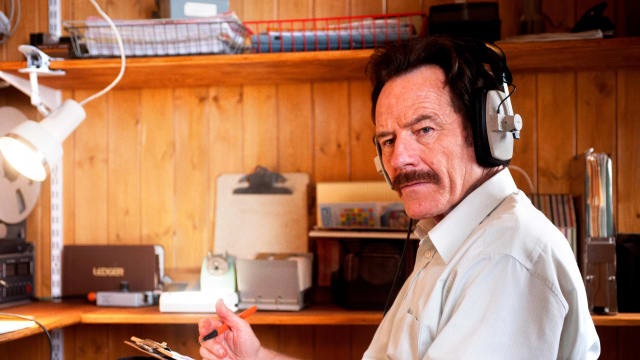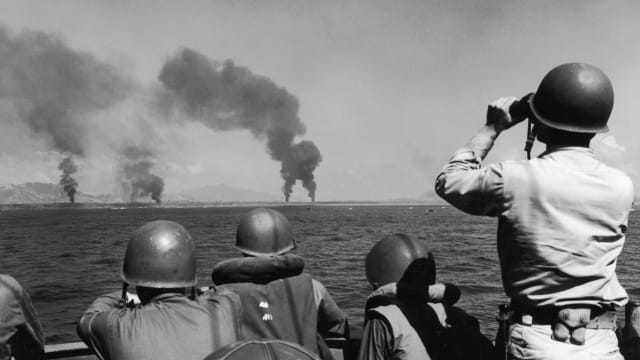The True Story Behind ‘Siege of Jadotville’
Before reading the script for Richie Smythe’s The Siege of Jadotville neither Jamie Dornan nor Jamie O’Mara, had heard the harrowing tale of how 155 Irishmen deployed by the UN bravely fought off an army of 3,000 Katangese attackers while on a peacekeeping mission in the Congo in 1961. This is especially surprising given that both men grew up in Ireland, and given the country’s traditionally neutral stance in the world, epic battles to read about are few and far between. So after digging a little deeper, both were happy to not only sign on for the project, but also become champions for an incredible unit of soldiers who are just starting to get recognition from their homeland, nearly six decades later.
“Getting ready for the movie, we started to ask around about the battle, and it was a little shocking how little respect they got,” says O’Mara, who plays Sergeant Jack Prendergast. “The Irish Defense Forces buried the story, because they took the fact that the group eventually surrendered as an embarrassment.” The event would even inspire something of an insult in the Irish Defense Forces, with the term “Jadotville Jack” being thrown around at anyone acting cowardly during training camps.
Though the peacekeepers did eventually lay down their arms, over the course of six days, they killed 300 of the opposing force without sustaining a single casualty. According to the men who survived, their remarkable performance was the work of their tactically genius commander Pat Quinan, played in the film by Jamie Dornan. Portraying such a remarkable, and respected, individual was not a job that Dornan took lightly. “It is an incredible story of men defying all odds,” he says. “Reading about it for the first time, you couldn’t help to be moved by the story. The way that Pat handled the situation is beyond inspiring.”
The story was unearthed by Smythe while reading a novel on mercenaries, and stumbled upon a mention of the event, which was only given a single page of text. “I was blown away by the fact that I had never heard this story,” he says. “Once I started to learn more, I knew that I had to make this movie.” He secured the rights to the story Siege at Jadotville: The Irish Army's Forgotten Battle, a book written by one of the soldiers, Declan Power, and penned a script based on it. But the story truly came together when he received a chance call from Leo Quinan, Pat’s son. “He had heard I was writing a story about his father, and I thought he was going to lay into me,” says Smythe, laughing. The opposite occurred, and instead Leo shared with Smythe a priceless asset, a radio log that his father had smuggled out of the Congo containing information that even the Irish army had not seen.
“I was handed the ability to not just make the movie the right way, but also share revelations through it,” says Smythe. The authenticity did not only lie in the pages of the screenplay, but also through the execution on set in Johannesburg, South Africa. The actors were flown in early and took part in an intensive boot camp led by ex-British military officer Dan Hirst. “He did not take it easy on us,” admits Dornan. “It was three weeks straight of running through the desert with our packs in the sun and doing pull-ups under that intense heat.”
The final bit of serendipity came with the Gustav machine guns that were used by the actors in the movie. “The armorer managed to find guns that were historically accurate in South Africa,” says O’Mara. “I mean these things were relics back in 1961, so they were incredibly old and hard to come by. The crazy thing is when they checked the serial numbers, it turned out that some of them were the guns that they actually used in the conflict.”
The results are undeniable, with Siege Of Jadotville providing a thrilling and respectful look at this heroic group of men, some of which were teenagers at the time. Despite favorable reception across the world, Smythe and the cast say that their primary concern was that it would pass with the men who experienced it. They got their answer during a special screening for those veterans in Dublin, when they saw soldiers and their families standing proud, tears in their eyes. It is an effort that helped bolster the legacy of the long unappreciated bravery of A Company, with the Irish government finally honoring them with a unit citation just this September. One has to wonder if the impending release of Siege had anything to do with that, especially given the timing. “If I’ve learned anything talking to these men and making this movie, it is that these guys deserve medals,” says Smythe. “Every single one.”


